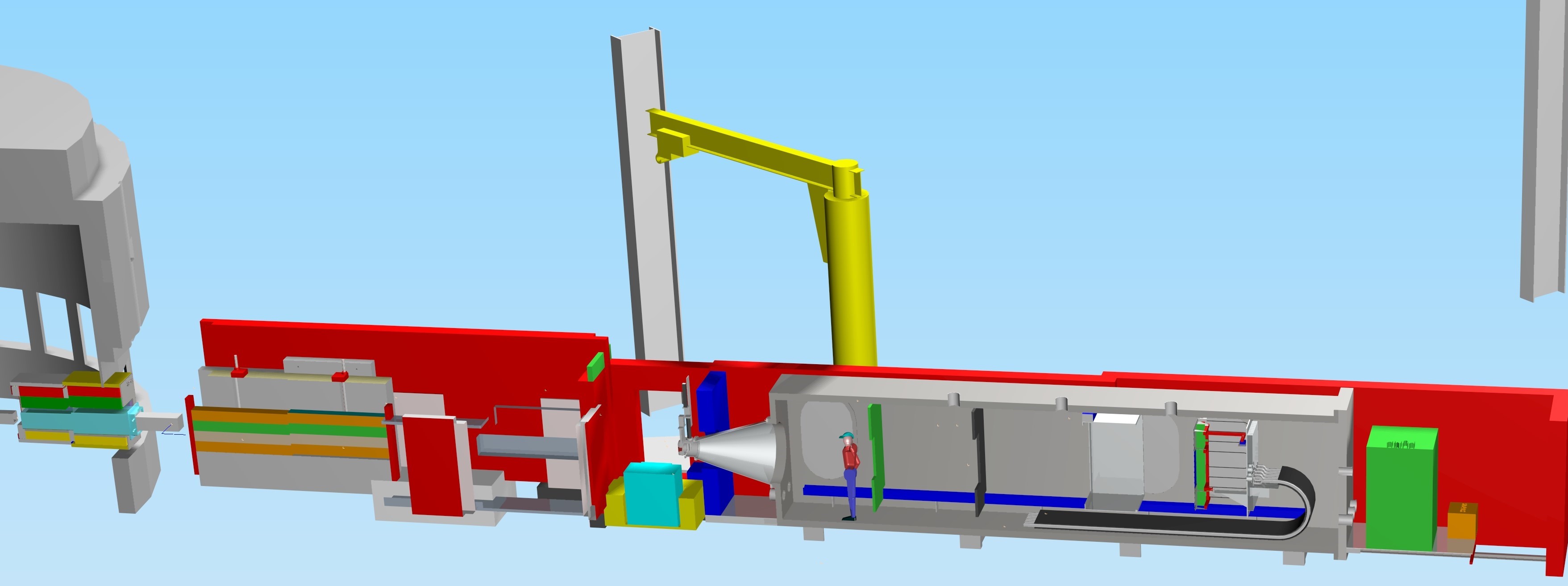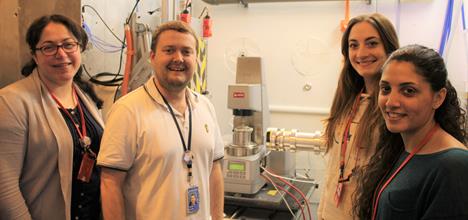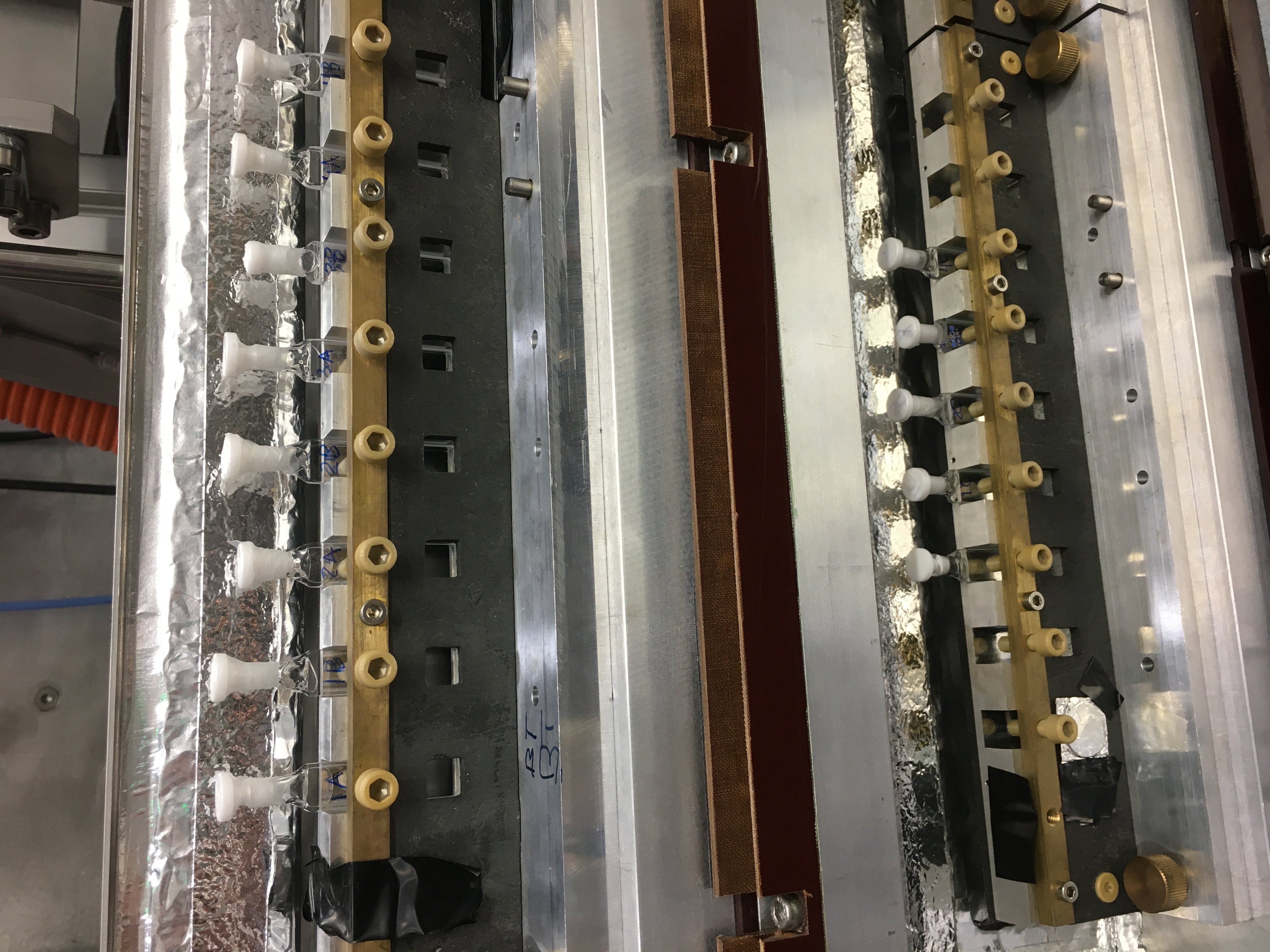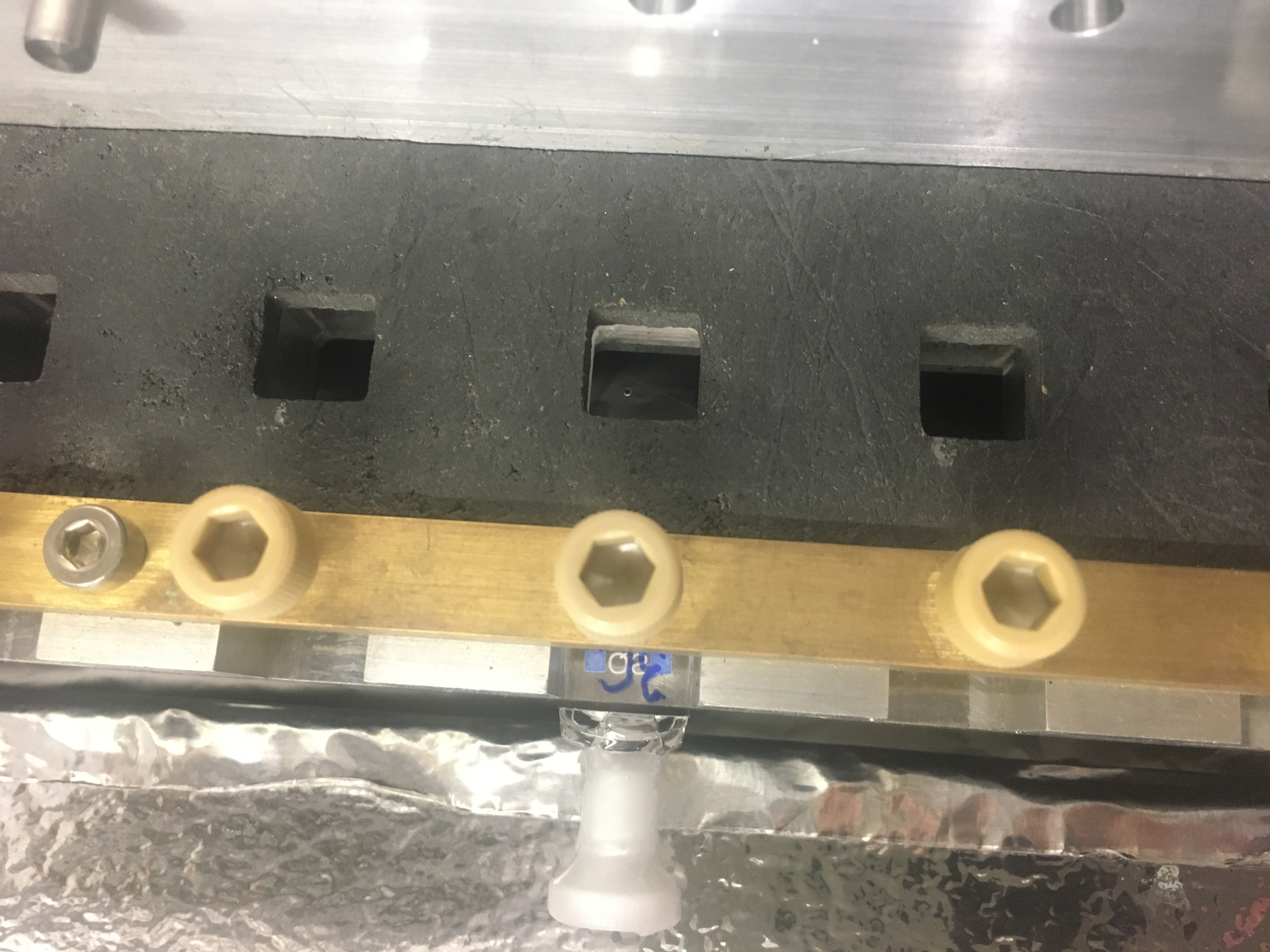
Zoom is a flexible, high count rate small-angle scattering instrument for advanced materials, magnetism, environment science, pharmacy and healthcare to study length scales 2‑2000 nm. For the first time at ISIS, it offers a dedicated polarised small angle neutron scattering and in phase II will use novel focusing devices and high-resolution detectors to reach smaller Q, to complement the Sans2d instrument, without building a very long beam line. Zoom has started its commissioning in March 2017 and in March 2019 it has hold the very first user experiment.
Polarised SANS enables the separation of the magnetic scattering from the nuclear one. We polarise the incident neutrons in a supermirror doouble V cavity, having the ability to flip the spin direction with a Drabkin type spin flipper. In a future stage, when polarisation analysis will be added to the suite, any significant incoherent background can be separated allowing more precise determination of form factors which may be an advantage in, for example, the study of proteins in an aqueous environment. By focussing the incoming neutron beam into the detector, the instrument will be capable of very small angle scattering (VSANS) with Qmin around 0.0003 Å-1 and will record two dimensional scattering patterns from anisotropic systems with a wide simultaneous Q range out to at least 0.15 Å-1which will be well-suited to kinetic and dynamic experiments.
The longer length scales and the polarisation of the incident beam accessed by Zoom will expand the range of studies in void formation, precipitation or magnetic domains in magnetic materials, metals, alloys and around welds; material processing and polymerisation using super-critical fluids will benefit from both the Q-range and sample space; studies of templated and mesoporous materials or directed assembly using DNA sequences, particularly the early stages of formation or where oriented anisotropic materials result.
The longer range hierarchical structure of synthetic and natural fibres, bones, or scaffold materials will make widespread use of the two-dimensional scattering capability of the instrument.
SANS has already helped greatly in the understanding of model drug and gene delivery systems such as vesicles. Smaller Q on Zoom will enable better characterisation of vesicles simultaneously with higher-Q data looking at their wall thickness and local flexibility. In this way, the complex interactions may be probed between embedded membrane proteins and say drugs or other vectors which are either free in solution or are attached to other vesicles.
The soft matter
research themes already in progress using SANS2d at ISIS will be
extended to longer length scales by Zoom, for example in areas such as
colloidal particles, emulsions, foams, lamellar fragments, block
copolymers, and their interactions with each other and other
macro-molecules or particles. As the degree of control over polymer
architecture by advanced synthesis methods improves and industrial
polymers continue to become more sophisticated, this area of study will
continue to expand. |  |
An array of 192, 8 mm diameter, 1 m long, 3He gas tubes, with electronics in an air box, will move inside a 10m long vacuum tank. The vacuum tank itself will move on rails to accommodate large sample environment equipment. A large high precision sample stage, will allow grazing incidence techniques to study surface structures (GISANS).
 | The Sample Changer allows for 36 to 40 samples in one only load, having 4 racks of 9 or 10 slots each, depending on the shape of the cuvettes containing liquid samples or powder/solid materials.
Top and Bottom racks can be at different temperatures and they are covered by Aluminium lid to keep the insulation.
 |

Zoom dashboard
Contact information for Zoom
Location and contact information for the Zoom instrument
| Access | Restricted |
| Building | R80 - EXPERIMENTAL HALL 2 |
| Telephone | 01235 446066
|
